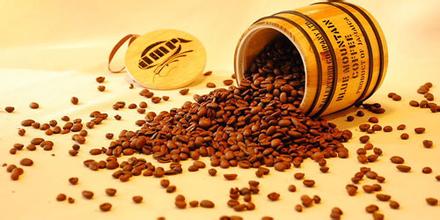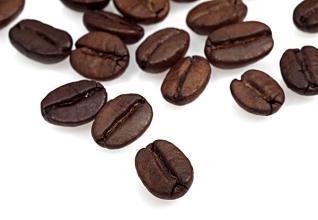Introduction to the flavor description of Brazilian coffee beans grown in manors
Introduction to the flavor description of Brazilian coffee beans grown in manors
Old bourbon coffee is grown on some estates in the Serrado district of MinasGreais in southeastern Brazil. These estates, such as Caping Blanco (CapinBranco) and Vista Allegre (VistaAllegre), grow old varieties of bourbon coffee on the market. Although they come from the same area, these coffees have their own characteristics. Capingblanco coffee is smoother than Vesta Allegre coffee, while Vesta Allegre coffee is strong and black, both of which have lower acidity. However, like all Brazilian coffee, they are most suitable for drinking when they are fresh and tender, because the older they are, the more acidic they are. These coffee growers have organized themselves into the Brazilian Special Coffee Association (theSpecialityCoffeeAssociationofBrazil).
The ingredients left in the hand after the coffee beans are squeezed out are red peel and pulp. What is squeezed out is the seed coat and the mucus adhered to it. Inside the seed coat are two coffee seeds wrapped in translucent silver skins. The vigorous production period of a coffee tree usually lasts about 15 years. Of course, some trees are still fruitful for 20 or 30 years. As soon as the coffee tree loses its ability to bear fruit, it will be cut down on the spot and uprooted so as not to compete for nutrients with other trees that are still strong and can bear fruit. Coffee yield is related to the species and growing environment of coffee trees. On average, a coffee tree can produce 5 pounds of coffee fruit a year, and eventually harvest about 1 pound of dried coffee beans.
Coffee trees are usually bred in nurseries, grow into seedlings, and then moved to coffee plantations a year later, in full compliance with the original Arab method of planting and cultivating coffee trees. In the first four or five years of its growth, the coffee tree will continue to take root downward, develop its trunk upward, and develop into an umbrella shape so that it can bear rich fruit in the future.
Before long, small fruits appear in piles, first green, then yellow, then red or crimson, and can be picked almost black. In Jamaica, bats are the first to know whether the fruit is ripe or not. by sucking coffee pulp at night, they are telling people that the fruit is ripe and ready to be picked. The oval fruit gathers tightly around the branches, with slender, smooth dark green toothed leaves on both sides of the branches. The leaves on the sunny side are harder, the back is softer, the edges are fan-shaped, and the branches are opposite from the trunk.

Important Notice :
前街咖啡 FrontStreet Coffee has moved to new addredd:
FrontStreet Coffee Address: 315,Donghua East Road,GuangZhou
Tel:020 38364473
- Prev

Grinding scale of Brazilian Yellow bourbon Coffee Bean introduction to the manor with taste treatment method in the producing area
Grinding scale of Brazilian Yellow bourbon Coffee Bean Variety Origin Taste treatment Manor introduction [country]: Brazil (Brazil) [producing area]: Syrador (Cerrado) [Manor]: Bau Manor (Fazenda Bau) [Variety]: yellow bourbon Yellow Bourbon [Grade]: NY.2 [growth altitude]: 1100-1200m [treatment]: solarization Natural treatment
- Next

Description of the Flavor of Coffee beans in Yejiaxuefei Manor introduction to the planting Environment of Grinding scale varieties
Yirgachaffe coffee is the rarest coffee bean on the market in Ethiopia, which is exported to Japan and Europe, but is rarely seen in the United States. This is because Dallmeyer, a German coffee roaster owned by Nestle, has established close ties with the growers of Yega Snow Coffee.
Related
- Detailed explanation of Jadeite planting Land in Panamanian Jadeite Manor introduction to the grading system of Jadeite competitive bidding, Red bid, Green bid and Rose Summer
- Story of Coffee planting in Brenka region of Costa Rica Stonehenge Manor anaerobic heavy honey treatment of flavor mouth
- What's on the barrel of Blue Mountain Coffee beans?
- Can American coffee also pull flowers? How to use hot American style to pull out a good-looking pattern?
- Can you make a cold extract with coffee beans? What is the right proportion for cold-extracted coffee formula?
- Indonesian PWN Gold Mandrine Coffee Origin Features Flavor How to Chong? Mandolin coffee is American.
- A brief introduction to the flavor characteristics of Brazilian yellow bourbon coffee beans
- What is the effect of different water quality on the flavor of cold-extracted coffee? What kind of water is best for brewing coffee?
- Why do you think of Rose Summer whenever you mention Panamanian coffee?
- Introduction to the characteristics of authentic blue mountain coffee bean producing areas? What is the CIB Coffee Authority in Jamaica?

